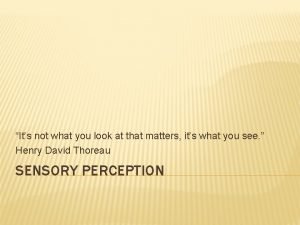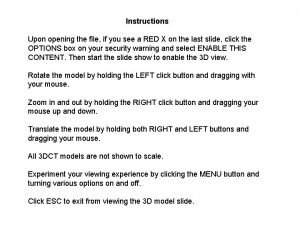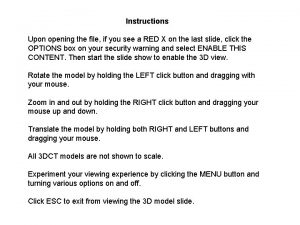Instructions Upon opening the file if you see



- Slides: 3

Instructions Upon opening the file, if you see a RED X on the last slide, click the OPTIONS box on your security warning and select ENABLE THIS CONTENT. Then start the slide show to enable the 3 D view. Rotate the model by holding the LEFT click button and dragging with your mouse. Zoom in and out by holding the RIGHT click button and dragging your mouse up and down. Translate the model by holding both RIGHT and LEFT buttons and dragging your mouse. All 3 DCT models are not shown to scale. Experiment your viewing experience by clicking the MENU button and turning various options on and off. Click ESC to exit from viewing the 3 D model slide.

Gibbons are apes and one of our closest living relatives. The Smithsonian Institution’s Division of Mammals (http: //vertebrates. si. edu/mammals/) houses many gibbons in its scientific collections. This specimen, USNM 279146 (http: //collections. mnh. si. edu/search/mammals/? irn=7296466), is a female hoolock gibbon (Bunopithecus hoolock) from Myanmar. This individual was collected by Kenneth Stager in 1945 near Myitkyina in Kachin Province. This is a CT scan of the cranium of USNM 279146. These three-dimensional scans are made publicly available through the generous support of the Smithsonian 2. 0 Fund, provided from the annual gifts of the Smithsonian National Board to the Secretary to use at his discretion (http: //smithsonian 20. si. edu/fund. html), and the Smithsonian Collections Care and Preservation Fund. The main goal of this joint initiative between the Human Origins Program and the Division of Mammals is to make the NMNH's scientific collections of our closest living relatives, the apes, available in 3 D for education and research. These slides can be used for educational purposes only. For all other uses, please contact the Human Origins Program at HO-Photo. Request@si. edu or Human. Origins@si. edu






